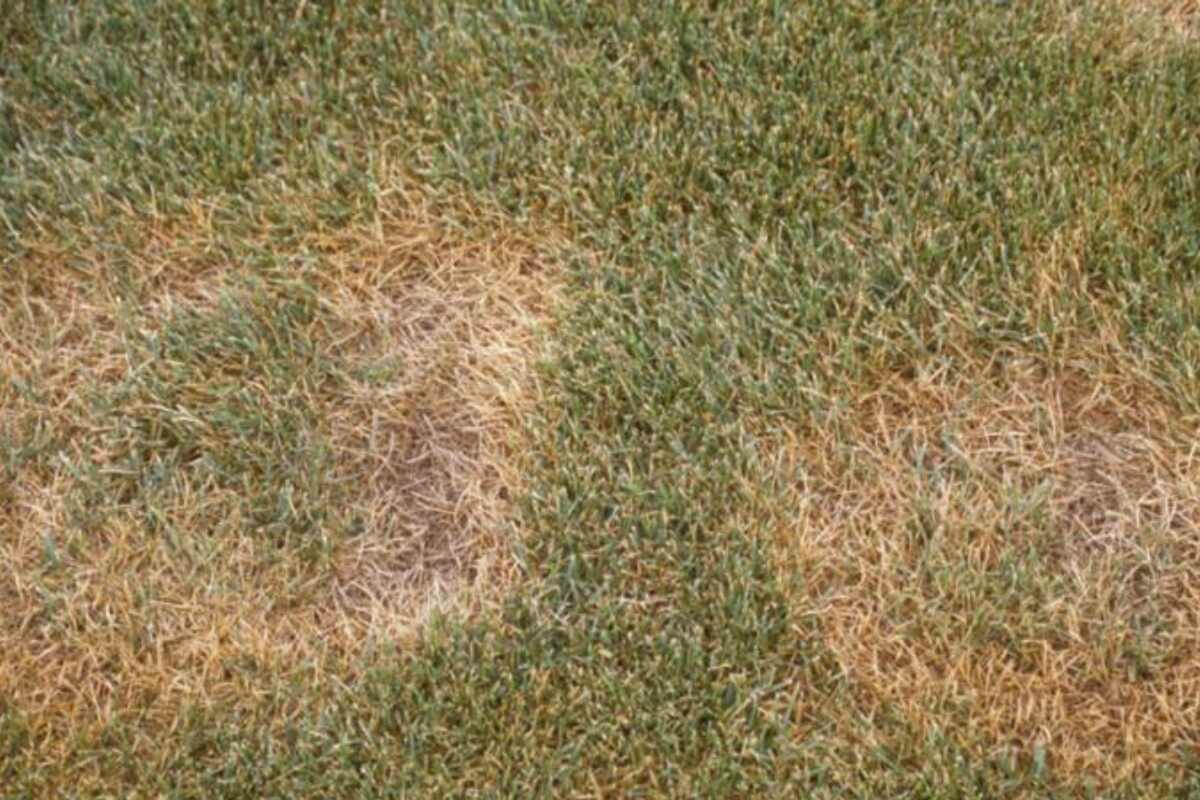
Summer patch lawn disease is a heat-loving fungal lawn infection that appears in cool-season lawns and chews through turfgrass roots like candy. It can ruin your lawn if left to do its bidding. You’ll need professional help for sure identification, penetrant fungicides to kill the infection, and a proper lawn care routine to keep it from returning.
Learn to spot, stop, and prevent summer patch lawn disease from this guide. We’ll show you the common signs, share effective control strategies, and help you keep your lawn healthy all summer.
How to Recognize the Summer Patch Disease in Your Lawn
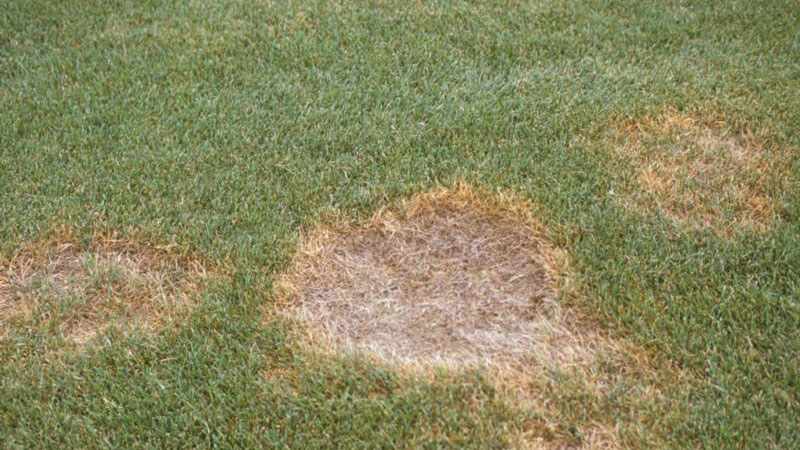
This is a difficult disease to identify, and often, calling a lawn care specialist is required. But, still, there are some tools you can use to figure out if it could be summer patch in your turf. We’ll explain all the ways you can recognize summer patch in this section, including:
- Signs and Symptoms of Summer Patch
- When Does Summer Patch Disease Appear?
- How to Test for the Summer Patch Disease in Your Lawn
- Other Lawn Diseases You Can Confuse With Summer Patch
Signs and Symptoms of Summer Patch
Summer patch disease is challenging to identify since it bears symptoms similar to other common lawn diseases. Most times, you’ll need the skills of a qualified plant diagnostician to confirm the disease in your lawn.
Here’s what you can observe with the naked eye when this fungus makes its presence noticeable and what is visible only through a microscope:
- Patches of wilted, poorly growing grass: The disease starts in your lawn with circular areas of wilted and off-colored grass that grows more slowly than the neighboring turf.
- Straw-colored and brown turf: Turfgrass continues to decline and, in 1 to 2 weeks, turns yellow (annual bluegrass), straw-colored, or reddish-brown (Kentucky bluegrass and fine fescues). The grass will turn brown when it dies.
- Clusters of small and large circular patches: Patches can start small, less than 4 inches wide, and extend to 18 inches wide, or large patches can occur suddenly. They typically appear in clusters. In severe cases, patches merge, forming a mix of rings and arcs.
- Sunken centers: Infected grass plants collapse to the soil surface, so the centers of the patches look sunken.
- Orange or bronze edges: You’ll notice an orange or bronze outline in patches where the disease is still active.
- Frog-eye appearance: In lawns seeded with turf blends, creeping grass regrows in the middle of bluegrass patches, creating a frog-eye or donut appearance.
- Dark-brown, rotted crown and root: The grass’s roots, the crown area, and rhizomes are rotted and dark brown.
- Leaf blight: On infected plants, leaves die back from the top. They look blighted with a tan, yellow, or orange hue.
- No fungal signs: Summer patch fungus doesn’t produce a mycelium that’s visible to the naked eye. Mycelium is a cottony white substance that appears on top of grass in cases of some lawn diseases (just not this one).
- Microscopic symptoms: Under the microscope, dark brown strands of fungal hyphae can be seen on the surface of the roots. The vascular cylinder of roots has a specific discoloration, and brown fungal cells are inside the root tissue. These microscopic signs are one reason you might need a plant lab to diagnose summer patch in your lawn.
When Does Summer Patch Disease Appear?
As the name says, it’s a summer disease active during warm weather, typically from June to September.
The fungus colonizes the roots, stolons, and rhizomes of grass plants during spring, summer, and fall while soil temperatures are over 65°F, but outbreaks occur in mid-summer.
Summer patch infections start with high soil moisture caused by an especially rainy period or overwatering, which blocks oxygen from reaching the lawn’s roots. As hot weather shows up and temperatures warm over 82°F, all hell breaks loose in your lawn.
Wet, hot weather is ideal for this fungus to invade deep into the root tissue and take over the plant’s vascular system. With less and less access to water and nutrients, the plants wilt, lose their color, and finally die.
Symptoms have their peak during droughts. Infected grass no longer has functional roots to help it survive the lack of water, and damaged patches appear quickly on the lawn.
When temperatures drop, the disease slows development, and the fungus eventually enters dormancy. If left untreated, it returns in the same spots next season, with patches growing 2 to 4 inches wider each year.
How to Test for the Summer Patch Disease in Your Lawn
An easy way to check for summer patch disease in your lawn is to tug off some grass plants in the damaged areas. Infected plants should pull off easily since the root system is damaged. You’ll also see dark brown tissue at the crown level and on the roots.
The surest way to confirm summer patch infestation is to collect some infected grass plants and send them for testing at a diagnostic laboratory. To take a good sample:
- Collect entire grass plants, including roots, stems, sheaths, and leaves.
- Include a soil sample from the infected areas.
- Get samples from the center and the edge of the damaged patches to ensure plants are at different stages in the disease development.
- Place grass in a plastic bag with a moist towel to prevent samples from drying out during transport.
- Attach a label including the type of grass on your lawn, symptoms you’ve observed, cultural practices, and chemical treatments you’ve made.
Contact a nursery or your local Cooperative Extension Office for a list of plant pathology labs in your area.
Other Lawn Diseases You Can Confuse With Summer Patch
Summer lawn diseases are severe, and there’s more than one targeting your beautiful cool-season lawn. Among the most common you can expect in your lawn that are easy to confuse with a summer patch infection are dollar spot, brown patch, and Pythium blight.
Dollar Spot
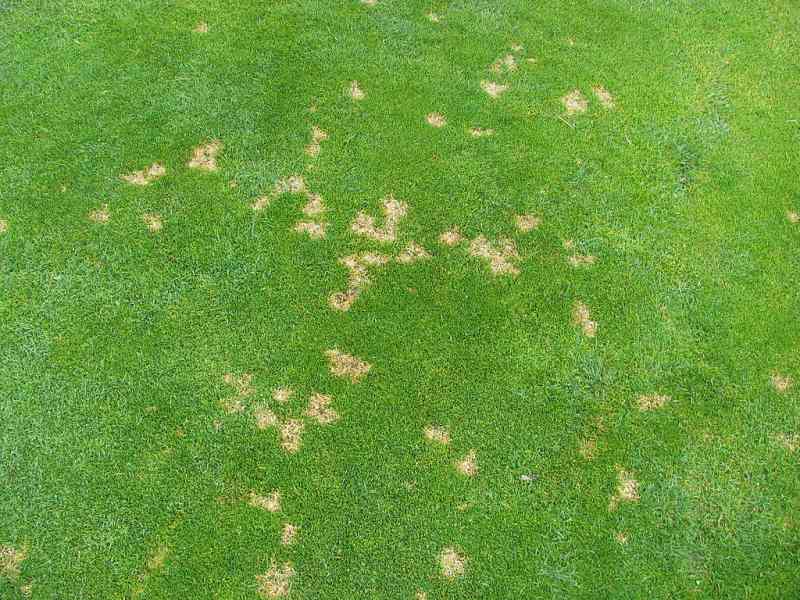
This fungal disease starts by making small straw to brown-colored spots on your lawn in late spring and early summer. As the spots grow into larger patches, the disease can be confused with summer patch from a distance. Close up, the two are easy to distinguish.
Dollar spot is a foliar disease and causes distinctive marks on grass blades, such as tan and straw-colored hourglass lesions with a dark brown edge. Grass remains upright in infected patches rather than wilting, as it does in cases of summer patch. If you dig up turf infected by dollar spot, you’ll fail to see any root or crown rot.
Brown Patch
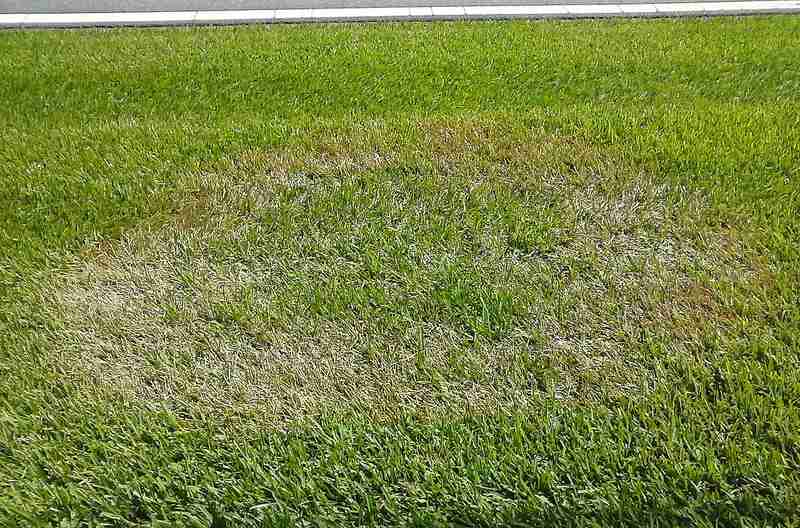
Like summer patch, brown patch stays dormant during winter and does its damage in hot, humid weather. It turns active when dew periods exceed 10 hours and nighttime temperatures climb above 65°F, infesting tall fescue, perennial ryegrass, Kentucky bluegrass, and bentgrass.
The brown patch disease creates circular brown spots, often with a frog-eye appearance. But similarities stop here. Since it’s a foliar disease, you’ll see individual lesions on blades, brown and copper-colored, and rotted sheaths, but no damage to the roots. Another tell-tale sign is the white mycelium visible in the early morning between grass leaves.
Pythium Blight
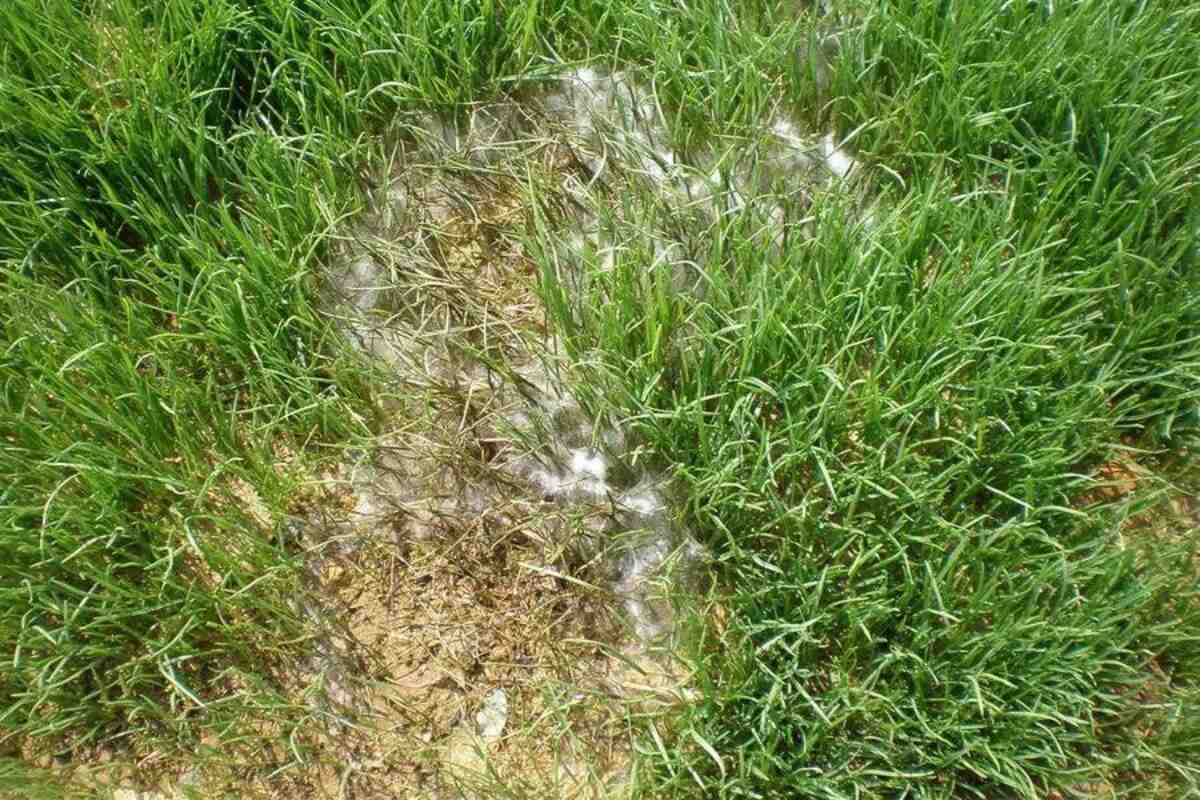
This fungal disease attacks perennial ryegrass, creeping bentgrass, fine fescues, and bluegrasses during hot and wet weather. It makes small circles of withering, blackened, or reddish-brown grass 2 to 6 inches wide with infected leaves laying flat and sticking together, like greasy hair.
What’s different from summer patch disease is that Pythium blight patches look water-soaked in the morning, and if you rub some grass in your hand, it feels oily.
How to Prevent and Treat Summer Patch
While summer patch disease requires fungicide treatment to defeat the pathogen, lawn care practices are also essential in removing this fungus. Here’s what you can do to limit the infection, treat damaged areas, and prevent the disease from returning.
This section covers:
Cultural Control
Your lawn maintenance routine makes all the difference between a successful summer patch treatment and a failed one. All these lawn care tasks might seem like a lot of work, but they’re the best way to help your grass recover quickly and stay healthy in the long run.
Improve Aeration and Drainage
Use core aeration to loosen compacted soil, improve drainage, and give the grass’s roots better access to oxygen and nutrients.
Aeration gives your lawn better water management abilities and helps grass roots grow stronger and healthier. You can buy or rent an aerator to do the treatment yourself, or you can hire a professional lawn care company to aerate your turf for about $75 to $225.
Limit fungal spreading: Aerator tints are a primary avenue for spreading infection. Clean the aerator thoroughly after use, and always aerate the diseased areas last to avoid spreading the fungi.
Raise Mowing Height
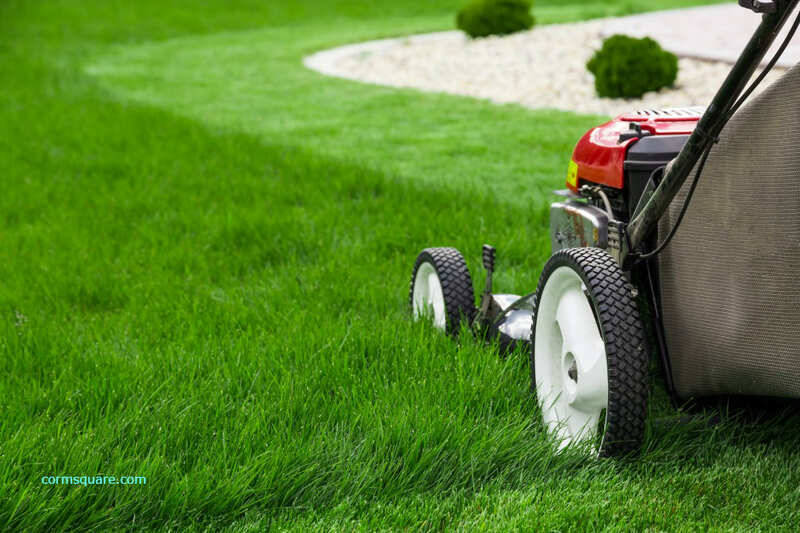
Experts recommend keeping the lawn mower blade at 3 inches high during summer.
Taller grass shades the soil, protecting it from heat and limiting water evaporation. It also promotes deeper roots, which are more resilient to infection. Here’s a detailed lawn mowing guide to help you cut the lawn correctly.
Leave grass clippings on your lawn during summer mowing. Summer patch is a root disease, not a foliar one, and clippings don’t spread the infection. Grass clippings add nitrogen to the soil, which helps grass keep its green color better. They also prevent water evaporation during droughts until they decompose.
Lower Soil pH
To lower soil pH, amend your soil with acidifying fertilizers like ammonium sulfate or sulfate-coated urea. This process is done gradually, in spring and fall, to allow turf time to adjust to this chemical change.
Changing soil pH always starts with a soil test. It’s the only way to know the soil pH and how much you need to lower it. To test the soil pH, you can purchase an at-home soil testing kit or take a few samples and send them to the local Cooperative Extension Office for analysis.
Adjusting soil pH is sensitive stuff. Take extra precautions with a Kentucky bluegrass lawn. KBG turf loves a pH of 6 to 7 in the soil and doesn’t tolerate acidity well. If you’re lowering the pH too much, you might harm it.
Some acidifying fertilizers are also rich in nitrogen. Take care not to overfertilize your lawn when applying them.
Switch to a Resistant Grass Type
If the summer patch disease repeatedly infects your lawn, overseed your yard with perennial ryegrass or tall fescue to reduce damage and increase your lawn’s resilience.
On golf courses, this strategy takes the form of allowing creeping bentgrass to cover larger areas in the turf.
Avoid Excessive Nitrogen in Spring and Fall
Focus on fertilizing for root growth in the spring. Roots need potassium more than nitrogen to develop well. Test the soil and add potassium if needed.
Avoid adding nitrogen before the turf starts greening up and for the first three weeks after it does. The growth rhythm is too slow to require nitrogen, and any excess forces blades to develop at the expense of the root system.
We have a complete guide on when to apply fertilizer to your lawn that you can check out for more details.
Irrigate Deeply and Less Often
Watering your lawn deeply and infrequently – instead of just a little bit every day – is the golden rule for promoting deep, robust roots. Water your lawn when the turf shows signs of stress like wilting, recovering more slowly from foot traffic, and taking on a grayish tint.
Aim to moisten the top 4 to 6 inches of soil. Irrigate in the morning to limit evaporation and allow the water to soak into the lower layers of the ground.
Prevent Thatch Buildup
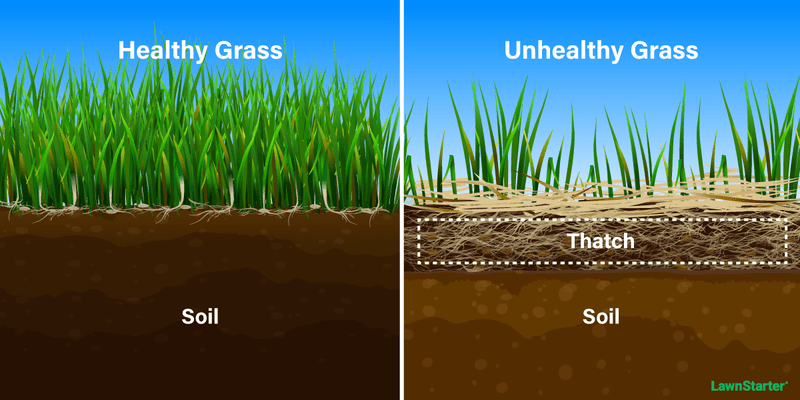
Summer patch fungi hibernate in the thatch layer during winter. Remove thatch from your lawn in spring and fall to limit the chances of fungal infestation. Buy or rent a verticutter or hire a lawn care service to clear your lawn from thatch for an average dethatching cost of $0.15 to $0.35 per square foot.
Limit fungal spreading: Vertical mower blades are also an excellent way to spread the summer patch fungi in your lawn because they graze the soil. Ensure proper disinfection before and after use and dethatch the infected areas last.
Syringe the Turf During Hot Afternoons
Softly watering the turf with a light sprinkling of water (aka “syringing”) in the afternoon during hot periods relieves some heat and drought stress. Wait for the day’s hottest hours to pass, and set your sprinkler to spread a thin mist over the lawn for a few minutes to help cool the turf.
Keep All Lawn Care Tools Clean
Summer patch fungus spreads through the soil on lawn mower blades, aerator tines, vertical mower blades, and any other equipment or tools that go across the lawn, including shovels and rakes used to gather thatch. Your shoes can also spread the fungus. Clean everything after use on infected areas.
Limit Foot Traffic on the Grass
Turf is already sensitive when infected. Stop walking on it or using it as a playground until the disease is treated and the grass starts to recover. As mentioned above, walking through infected grass can also spread the fungus to healthy parts of your lawn.
Remove Dead Leaves
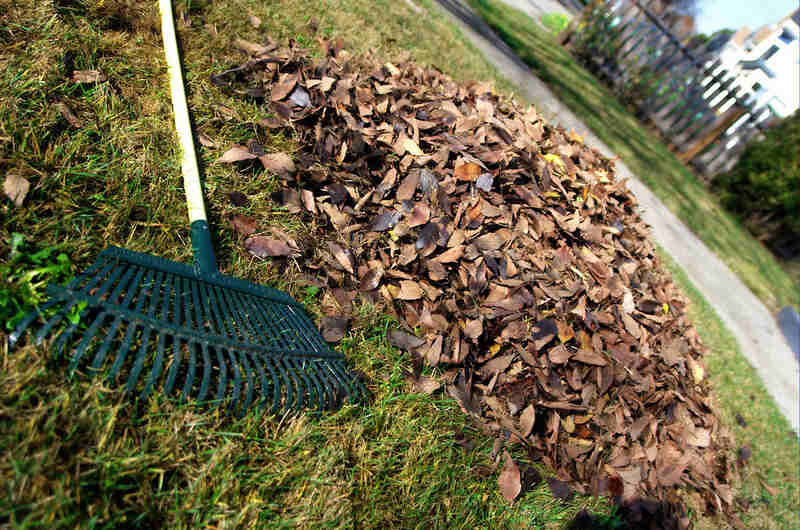
When fall comes, keep your lawn clear of dead leaves and remove them periodically before they pile up. They provide a great source of nutrients and shelter for fungi and pests, keeping light and air from reaching your grass.
Manage Lawn Pests
A lawn pest infestation can worsen any turf disease by damaging the grass’s roots, stems, and leaves. Know your pests, watch for signs showing their presence, and take action quickly. Keep away grubs, chinch bugs, armyworms, and other turf critters to ensure a healthy, robust lawn that can face any fungal threat.
Chemical Treatment
Summer patch is best treated with penetrant fungicides. Here are three categories of active ingredients that give good results:
- Demethylation inhibitors (DMI): metconazole, propiconazole, triadimefon, tebuconazole, myclobutanil
- Methyl benzimidazole carbamates (MBC): thiophanate-methyl
- Quinone outside inhibitors (QoI): azoxystrobin, fluoxastrobin, pyraclostrobin
Some of the most popular brands of lawn fungicides used in summer patch treatment are:
- Heritage Action
- Headway
- Enclave
- Pillar
- Lexicon Intrinsic
Curative treatment has little effect as a summer patch control strategy. Your best approach is making preventive fungicide applications in the fall and spring, 3 to 4 weeks before symptoms show.
Wait until the soil warms up in the spring, reaching 65°F for at least three days. You need the fungi to exit dormancy for the active ingredients to work, and that’s when they come back to life.
The general rule is to make 2 to 3 applications 28 days apart. But, more important is to follow the label instructions regarding application and fungicide concentrations.
In this case, you’re targeting roots, not foliage, and need enough solution to penetrate the topsoil. Apply a large spray volume of up to 5 gallons per 1,000 square feet to reach the turfgrass crown and upper portion of the root system. Aerate and irrigate before application to help the fungicide solution absorb more deeply into the soil.
Another approach to ensure absorption is to apply a lower volume early in the morning and irrigate with ⅛ to ¼ inches of water to get all the fungicide lingering on grass leaves to fall to the soil surface and get absorbed.
How to Repair Summer Patch Damage
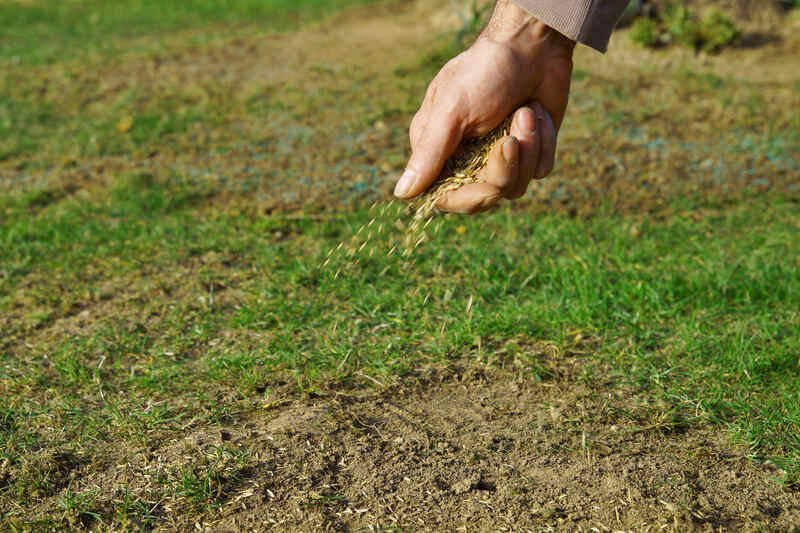
Turfgrass infected by the summer patch disease usually dies. You’ll have off-color grass in your lawn, then dead grass, thinned patches, or bare spots. Here’s how to deal with them to repair your lawn’s looks.
Grass Paint
If you need to return your lawn’s green look fast, grass paint is the best way. It’s non-toxic, easy to find and use, and safe for pets and kids. You spray the off-colored areas and get a uniform green turf in minutes.
With a family gathering or an outdoor event happening soon in your yard, turf paint is a magical trick to fix off-colored turf instantly. It won’t do anything about the thinning and wilting, though. It’s a purely cosmetic, temporary fix.
Apply Small Amounts of Nitrogen
When the symptoms peak on your lawn, apply small amounts of nitrogen fertilizer (0.1 to 0.2 pounds per 1,000 square feet) to mask the effects of the disease. It helps the grass keep its green easier.
Overseed With Resistant Turf Types
Grass plants infected by the summer patch fungus eventually die. Clear the turf of damaged grass and reseed with resistant grasses like perennial ryegrass or tall fescue to revive the lawn and keep it safe from re-infestation. Use blends and spread across the entire yard to prevent creating patches of grass that look different from the rest of the turf.
What Causes the Summer Patch Disease?
The pathogen that causes the summer patch disease is Magnaporthiopsis poae, also known as Magnaporthe poae and the Kentucky bluegrass fungus.
M. poae is wicked and atrocious. It can stay hidden on grass roots throughout the year without showing symptoms unless the proper weather conditions arise.
The fungus survives the winter cold in soil and thatch, on perennial plants, and in other organic debris left on the lawn. It won’t leave your turf alone until managed adequately with cultural practices and fungicides. Otherwise, it returns every summer to take another bite out of your grass.
Certain environmental factors and faulty cultural practices can promote disease development and worsen the infection. Here are the most important to consider:
- Soil compaction: Compacted soil makes it hard for roots to grow, dig deeper into the ground for water, or extend sideways to reach more nutrients. Grass grown on compacted soil is easier for root diseases to infect and damage. Aerate the lawn and add organic matter, such as compost, to alleviate soil compaction.
- Potassium deficiency in the spring: The root system does most of its annual growth in the spring and needs potassium. If the soil is deficient, grass roots develop poorly and are more vulnerable to infection and drought. You can solve this issue by using a high-potassium fertilizer in spring.
- Poor drainage: Soil with drainage problems keeps water soaking in the topsoil, where roots mostly grow. Saturated soil blocks root access to oxygen whenever it rains too much or you overwater, making grass roots weak and exposing them to root rot. Aeration and organic matter can improve your soil’s drainage, and you can also implement drainage systems, such as a French drain, to redirect water from your lawn.
- Drought stress: Grass plants require water to absorb and transport nutrients. Roots have difficulty accessing nutrients if the soil is dry and can’t develop properly.
- Excess nitrogen fertilizer: Too much nitrogen fertilizer during spring promotes canopy development instead of root growth. It leads to a greener, lusher turf but a weak and vulnerable root system under the soil surface.
- Excessive thatch: A thick thatch layer covering the soil in your lawn blocks air, nutrients, and water from reaching the grass roots. It also harbors dangerous fungi, including Magnaporthiopsis poae, which causes the summer patch disease. Dethatch your lawn any time the thatch layer exceeds ¾-inch.
- Soil with a high pH: When soil pH is 6.5 to 7 or more, grass is more susceptible to summer patch damage. Alkaline soil limits nutrient absorption and plant growth, making infestation and damage easier. Test your soil to find out its pH and add acidifying soil amendments if it’s too high.
- Sun exposure: Once infested, turfgrass becomes more sensitive to weather conditions, especially drought. Areas exposed to sun and heat for more extended periods are damaged more severely than partially shaded ones.
Turfgrass Species Susceptible to Summer Patch
Summer patch is the most important fungal disease in North America’s lawns, sports fields, and golf courses. Magnaporthiopsis poae’s presence has been confirmed from the New England states to as far south as North Carolina and as far west as Nebraska.
It attacks cool-season grasses, and it’s most prevalent on:
- Poa family grasses – annual bluegrass (Poa annua) and Kentucky bluegrass (Poa pratensis)
- Fine fescues – creeping red fescue, hard fescue, Chewings fescue, and sheep fescue
Infections on creeping bentgrass are rare, and the grass recovers fast. It’s among the species considered resistant to the summer patch fungus, along with perennial ryegrass and tall fescue.
FAQ About Summer Patch Lawn Disease
What Grass Types are Most Susceptible to Summer Patch?
Kentucky bluegrass and fine fescues are the most susceptible to the summer patch disease. Creeping bentgrass can also be infected but with less damage.
Will Grass Recover From the Summer Patch Disease?
Attacking grass roots and the plants’s vascular system, summer patch often kills the plants it infects, and you have to overseed with new grass once you’ve eradicated the fungus.
What’s the Best Fungicide for Summer Patch?
Summer patch is best treated with penetrant fungicides, such as metconazole, propiconazole, triadimefon, tebuconazole, myclobutanil, thiophanate-methyl, azoxystrobin, fluoxastrobin, and pyraclostrobin. Commons products used by professionals and lawn owners are Heritage Action, Headway, Enclave, Pillar, and Lexicon Intrinsic.
Is Summer Patch the Same as Brown Patch?
No. Summer patch is a root disease caused by the Magnaporthiopsis poae fungus, while brown patch is a foliar disease caused by the Rhizoctonia solani fungus. They’re both active during summer on cool-season grasses but are different diseases and must be treated with different methods.
When to Call a Lawn Care Pro
Summer patch is a nasty and highly damaging fungal lawn disease. In this case, your best bet is to call in the professionals as soon as you suspect your turf is infected. LawnStarter can connect you with the best lawn treatment companies in your area who can diagnose and treat summer patch or any other disease your grass might be suffering from.
Don’t waste time! Look for a pro right now and give your lawn the best chance to recover and keep the disease from returning.
LawnStarter participates in the Amazon Services LLC Associates Program, an affiliate advertising program. LawnStarter may earn revenue from products promoted in this article.
Main Photo Credit: NC State Cooperative Extension